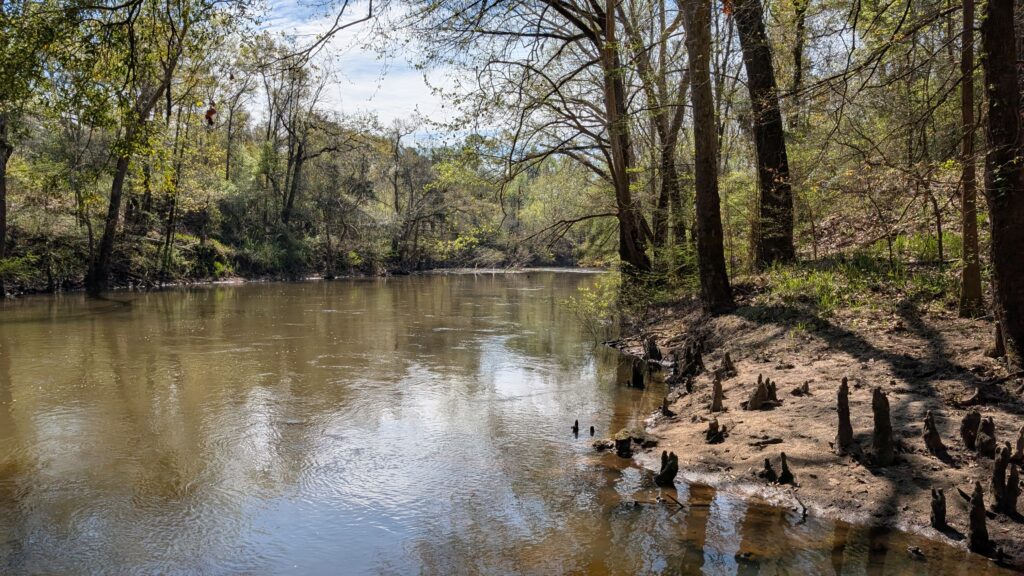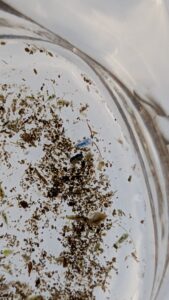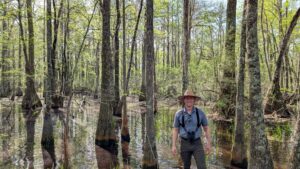The Aquatic Sciences lab never sleeps! As spring starts to look like summer, we’d take a quick look back at a busy winter and spring.
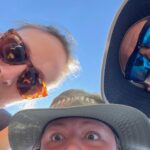
New research from the lab
Two new papers from the lab, both first author works from Nick’s PhD and postdoc work.
Marzolf NS, Meza-Salazar AM, Hidalgo M, et al. (2025) On the breakdown of woody debris across a groundwater gradient in Neotropical streams, Costa Rica. Freshwater Science. doi: 10.1086/734460.
Here, we measured the breakdown of wood fragments in 5 streams across La Selva Biological Station, Costa Rica, spanning a groundwater gradient of stream chemistry. Our main finding was faster wood decomposition with higher stream P concentration, and builds on a foundation of understanding the effects of nutrient rich groundwater in the tropics. Unlike many water bodies in the US with elevated nutrient concentrations, high P in streams at La Selva results from natural groundwater enrichment from magmatic activity, but offers insights into the biological consequences of elevated nutrients in streams with low nutrients.

Marzolf NS, Slaughter WM, Vlah MJ, et al. (2025) Ecosystem metabolism estimates from the National Ecological Observatory Network (NEON) stream and river sites. Scientific Data 12:478. doi: 10.1038/s41597-025-04710-9
In this data paper, we present data collected from National Ecological Observatory Network (NEON) used to estimate ecosystem metabolism (gross primary productivity and ecosystem respiration) from the 27 stream and river sites across the US. The data collection from NEON is immense and we offer methods to access, prepare, evaluate, model, and access estimates of GPP and ER using a variety of approaches. The data for this exercise are available through figshare, free to use both the high-resolution inputs and model estimates. We also prepared an R package to facilitate data acquisition, preparation, and modeling. One of the NEON sites is in our backyard, the Flint River, and we can begin to understand the ecosystem function of the Flint River in new ways!
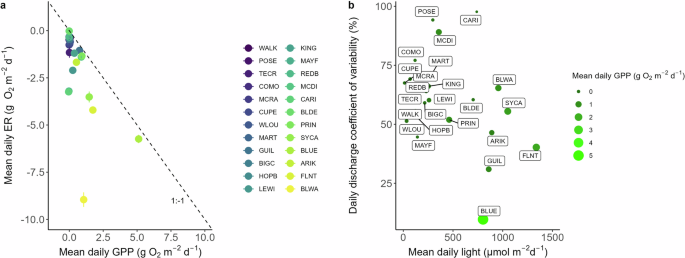
Outreach activities
Jones Center Open House 2025
The Jones Center hosted its biennial Open House on March 22. This year, we hosted the largest Open House in the Center’s history, with over 1000 attendees.
The lab space was open for visitors and we had a wide range of interactive pieces for the public to see. We displayed our low-cost CO2 sensors, YSI multimeter, velocity meter, fish otolith display, apple snail info sheet, posters for on-going research, and an array of invertebrates collected from our on-site wetlands.
The lab was also involved in larger activities during the event. Nick led 2 wagon tours in the morning, talking through a ~20 minute tour through the field. Jamie led an expert talk at lunch time on shoal bass research, and just as important, how to fish for shoal bass across the Flint River.
We also debuted our Fishes of the Lower Flint River poster and gave away copies to folks who visited the lab.
Spring Creek Charter Academy goes to the Flint River
The lab was contacted by teachers at SCCA in Bainbridge to discuss environmental issues with their students. We met with 40 7th graders at Griffin Park in Bainbridge to give an overview of activities in the Lower Flint River, including research and conservation. We prepared activity stations, including fish biodiversity, water quality, invertebrate identification, and freshwater mussel conservation.
Georgia Water Resources Conference
The Jones Center had a strong presence at the 2025 Georgia Water Resources Conference, held in Athens March 25-26th. Nick, along with Steven Brantley and Lora Smith, organized a session on wetlands in Georgia, including presentations from them and graduate students Katy Perkins (Auburn) and Suranjana Chatterjee (Auburn). Jamie presented shoal bass research in the section on Biota and Connectivity. Chloe, Jewell, and Dustin all presented posters on Tuesday afternoon.
We had a great time interacting with GA water people, new and old, and engaging with the SE chapter of the Society for Freshwater Science, which hosted their meeting with GWRC.

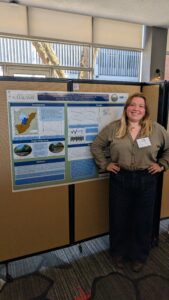
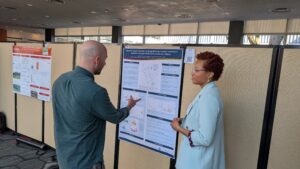
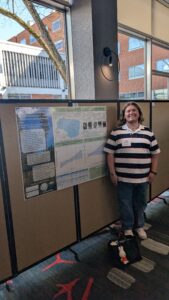


Collaborator visits to Ichauway
Following Nick’s visit to Athens in January, we were lucky to host two collaborators this spring, both from the Odum School of Ecology at Univ. of Georgia.
Dr. Alex Strauss and family joined for an exploration of zooplankton in the wetlands of Ichauway. We collected samples from marsh and swamp sites, identifying cladocerans, copepods, insects, fairy shrimp, and their parasites! Nick and Alex are recruiting a PhD student to study the role of zooplankton in the food webs of Ichauway’s wetlands and the effect of parasites, predators, and connectivity on food web complexity.
Dr. Charles van Rees joined for another tour of the wetlands of Ichauway, focused on wildlife use and biodiversity of marshes and swamps. We found the fairy shrimp hot spot, with larger and more abundant individuals in the marsh sites.
People in new places and roles!
With mixed emotions, the lab is undergoing its first change over in personnel (sort of).
Chloe Hall, seasonal technician, will be leaving the lab in July. But she will be back, as she begins a PhD program through UNC-Chapel Hill, co-advised by Dr. Amanda DelVecchia and Nick to study methane dynamics in wetlands at Ichauway.
Woods2Water RaMP participants, Jewell Johnson and Dustin Benton, will finish their time in the program at the end of April. Fortunately, both will re-join the lab as technicians this summer, bringing their experience in the lab through the RaMP program and allowing them to get up to speed with lab activities! We’re excited to have extra hands this summer!
There are other pieces moving regarding lab members, more coming soon!
Summer Happenings
No rest for the weary and the heat of the summer beckons. On the horizon, we have a busy to-do list:
- Jamie, Chloe, and Jewell will attend the Society for Freshwater Science meeting in Puerto Rico
- Chloe will begin collecting preliminary data for her PhD work, including greenhouse gas fluxes from isolated wetlands
- Collaborators from UNC will visit to collect Corbicula from across the Lower Flint to determine the role in methane uptake and cycling
- We will deploy new equipment across the Lower Flint tributaries to expand understanding of water quality patterns
- Lots of writing! With over a year of work at the Center, we can begin writing up analyses for publications, including work presented at GWRC this spring
- We’re ready for the Flint River and Ichawaynochaway Creek to enter their summer flows and for us to get exploring this summer!

